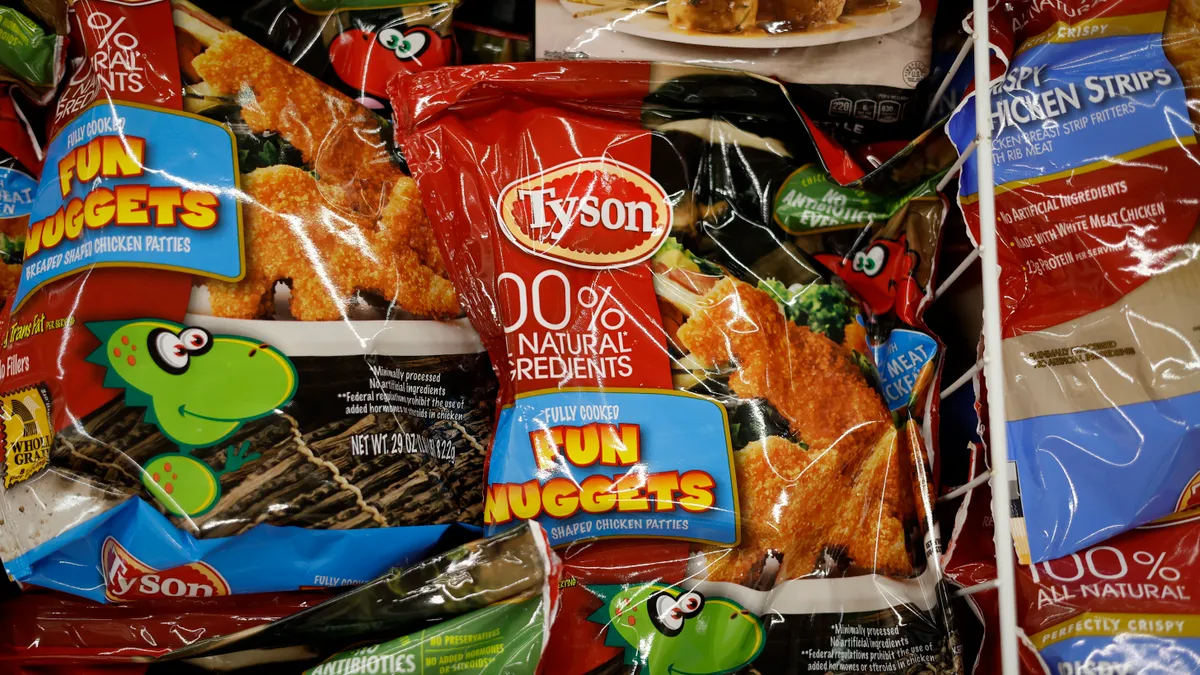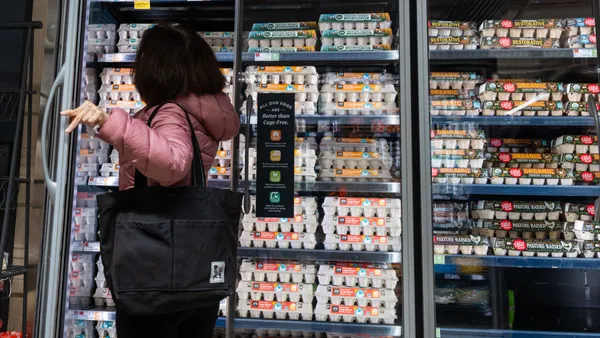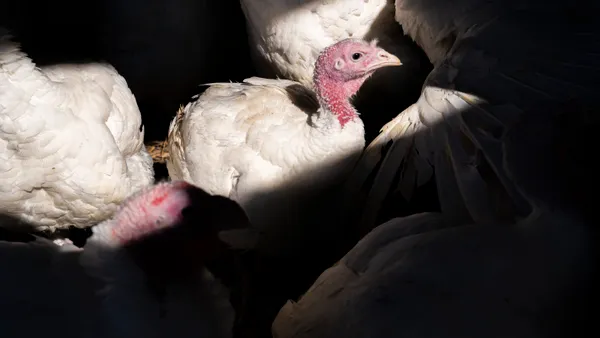Dive Brief:
-
After several processing plant closures this year, Tyson Foods on Monday indicated more cost cuts could be on the horizon as it navigates through a tough market backdrop in beef and pork.
-
The meat giant is reviewing opportunities across segments to optimize production by relying on more efficient plants, President and CEO Donnie King said in an earnings call. “We are evaluating everything, leaving no stone unturned."
-
Tyson shuttered six chicken facilities this year and last week unveiled plans to close two case-ready meat factories, with production to "shift to larger, more efficient plants,” King told investors. Fourth quarter sales totaled $13.35 billion, down 3% from last year and Tyson reported its third consecutive quarterly loss.
Dive Insight:
Despite lackluster earnings results, leadership was upbeat, saying income has improved from the previous quarter and Tyson is headed in the right direction as the company focuses more of its efforts on food service.
King highlighted improvements in the chicken segment, which has been weighed down by high grain and input costs, as well as solid results from Tyson’s prepared foods segment. He also noted various challenges in the beef and pork segments that have affected profit margins.
Cattle supplies continue to be tight as the industry patiently waits for herds to rebuild, which has moved prices higher. Meanwhile, the pork industry is working through supply-demand imbalances with signs of improvement as grain costs decline.
“Despite these headwinds, our goal remains to be best-in-class operators, so that we can manage these businesses as efficiently as possible. We remain focused on what we can control,” King said in the earnings call.
This year has been challenging for Tyson, Smithfield, JBS and other meat companies due to volatile prices and soft consumer demand, resulting in consecutive losses and a number of operational closures and consolidations.
So far, Tyson has closed six of its “older, less efficient plants” to better manage its chicken processing capacity, King said, and will bring “two smaller fresh meats case-ready, value added facilities offline” to “leverage efficiencies and reduce network redundancies.”
“We will continue to evaluate our production footprint and network to drive efficiencies,” King said.
Looking ahead, Tyson is expecting input cost improvements to have a positive impact on the business next year.
In fiscal 2023, the company generated sales of $52.9 billion, down less than 1% from the previous year. It also recorded an operating loss of $395 million over the past 12 months. Adjusted income was $933 million, down 79% from the previous year.
Tyson’s fourth quarter earnings were mixed on Wall Street, with adjusted income beating analyst expectations as sales dipped during a rocky market backdrop, according to a Zacks Consensus Estimate.
Shares spiked early Monday before retreating to about $45.75 on the New York Stock Exchange











